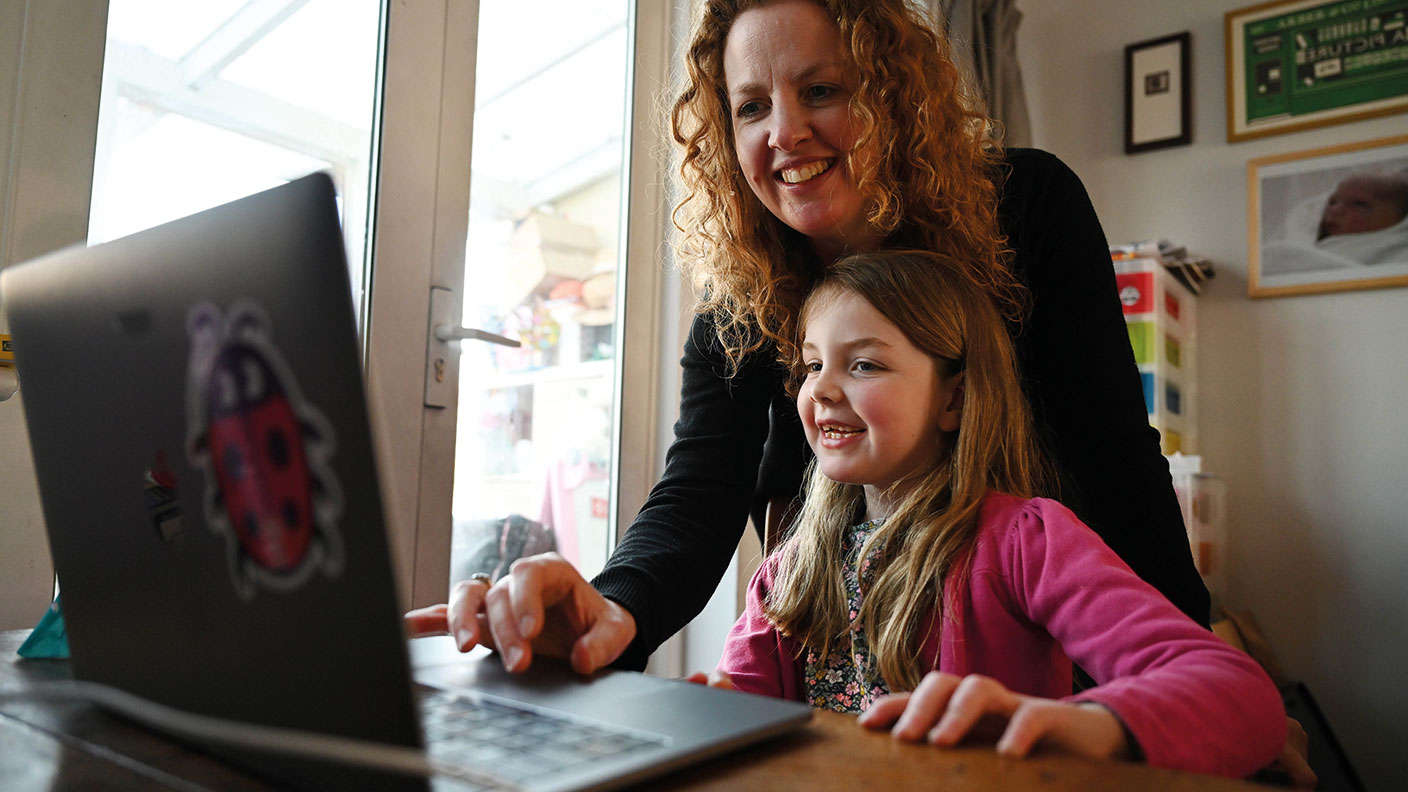Why children suffer most from lockdowns
School closures harm the prospects of children and it’s the poorest who are hurt the most. On a global level, that will have huge effects on human development.

What’s happening?
Most primary schools in England are starting to reopen to all children (not just those of key workers) from next week, albeit only for Reception and Years 1 and 6. Classes have typically been split into two “bubbles” or “pods”, with teachers drafted in from other year groups to make up the numbers. Most schools will not open every day as teachers will need to work on learning programmes for those children (for now the majority) who are still at home. The return to normality is likely to be slow and gradual. Repairing the damage caused by the shutdown might be even harder.
What damage?
Over the last two months, once the novelty of home schooling wore off and the hard reality kicked in, it became clear to parents of school-age children that the quality of home-schooling provision has been wildly variable. “There’s no consistency and there’s no framework from the government about what should be expected,” says Natalie Perera of the Education Policy Institute. A fortunate few have had full, timetabled days and lots of contact with teachers, videos and feedback. More often, though, in the state sector at least, “you’ll hear of a cursory web page once a week with a list of links to somewhere else”, says Hugo Rifkind in The Times. Individual schools have done their best to play catch-up. But astonishingly, central government was Awol. The Department for Education first issued guidance to schools on 19 April, a whole month after classrooms closed.
Who has suffered most?
Children in already disadvantaged areas and households, according to research by Carl Cullinane and Rebecca Montacute of the Sutton Trust. For example, 51% of primary and 57% of secondary students at private schools have accessed online lessons every day; the rate for their counterparts in state schools is less than half this. Within the state sector, children at more disadvantaged schools are likely to have less contact with teachers – and no online platform in place, no quiet space to do their work and parents who are less confident about overseeing it. As a result, already disadvantaged pupils are more likely to be doing less home schooling overall and returning less work to school, of a disproportionately poorer quality.
MoneyWeek
Subscribe to MoneyWeek today and get your first six magazine issues absolutely FREE

Sign up to Money Morning
Don't miss the latest investment and personal finances news, market analysis, plus money-saving tips with our free twice-daily newsletter
Don't miss the latest investment and personal finances news, market analysis, plus money-saving tips with our free twice-daily newsletter
And that damage will be permanent?
That’s the fear. The former chief inspector of schools in England (head of Ofsted), Michael Wilshaw, says it’s inevitable that the achievement gap between children from the richest and poorest families will now widen. Currently, disadvantaged pupils are more than 18.1 months behind non-disadvantaged pupils when they leave secondary school, according to annual research findings reported in the Financial Times. That’s a lot, but it’s an improvement compared with a 24-month lag in 2011. The risk is of permanent “scarring” for the most deprived. Becky Francis of the Education Endowment Foundation says initial research suggests that the pandemic will cause “at least a reversal of the progress we’ve made in closing the disadvantage gap over the last ten years for GCSE students”. Tory MP Robert Halfon warned last month of a “potential cascade of mounting social injustice that could last a decade”.
What can be done ?
There are practical steps that can be taken, according to the Sutton Trust. It urges more direct government action, in collaboration with technology firms, to ensure that all children have the resources (laptop computers, internet connections) to access online learning. Teachers rate this as the single most important factor and some schools are already doing this themselves. But again, this is far less common in the most deprived areas where the need is more acute. Second, the Sutton Trust recommends that the most disadvantaged pupils have additional one-to-one or small-group teaching (both online and face-to-face as schools reopen) to reduce the impact of the closures, which have hit the poorest children hardest. Third, more training is needed to help teachers deliver provision online: in recent weeks, this aspect has been highly variable. Finally, schools could run catch-up classes for disadvantaged pupils over the summer, focusing on those entering Year 7 (starting secondary school) in the autumn.
What about older students?
University students whose education has been disrupted and new graduates whose careers are stalled could suffer economic “scarring” effects for years, according to the Institute for Fiscal Studies. Young workers are more likely to lose their jobs in a recession and recessions have long-lasting effects on career trajectories. Meanwhile, the Resolution Foundation projects that UK graduates’ salaries will be 7% lower after two years due to the Covid-19 pandemic. For non-graduates, it puts the likely fall in wages at 20%. And the Sutton Trust found that 60% of apprentices have lost placements as a result of the pandemic.
What’s the global picture?
Existing inequalities will be widened on the global level too. Unesco, the UN’s educational arm, estimates that 91% of the world’s school pupils and students – nearly 1.6 billion people – have been affected by closures of schools in 188 countries. Of these, more than half a billion have lost all access to education, largely due to a lack of internet access – and the worst affected are primary-school pupils. This drop in school attendance is “one of the most significant factors” that has led the UN to forecast that its human development index – which measures health and education as well as income – will fall this year for the first time since the data series began 30 years ago, says Chelsea Bruce-Lockhart in the FT. The UN forecasts “that it will fall this year to such an extent that it will erase all progress in human development over the past six years”. If Covid-19 is the disease that attacks the old, it truly is the young who will suffer its most lasting legacies.
Get the latest financial news, insights and expert analysis from our award-winning MoneyWeek team, to help you understand what really matters when it comes to your finances.
Simon Wilson’s first career was in book publishing, as an economics editor at Routledge, and as a publisher of non-fiction at Random House, specialising in popular business and management books. While there, he published Customers.com, a bestselling classic of the early days of e-commerce, and The Money or Your Life: Reuniting Work and Joy, an inspirational book that helped inspire its publisher towards a post-corporate, portfolio life.
Since 2001, he has been a writer for MoneyWeek, a financial copywriter, and a long-time contributing editor at The Week. Simon also works as an actor and corporate trainer; current and past clients include investment banks, the Bank of England, the UK government, several Magic Circle law firms and all of the Big Four accountancy firms. He has a degree in languages (German and Spanish) and social and political sciences from the University of Cambridge.
-
 Taxpayers told to check capital gains tax return or risk penalty after rate changes
Taxpayers told to check capital gains tax return or risk penalty after rate changesWith the self-assessment deadline just three weeks away, taxpayers who need to report capital gains should take extra care to avoid a penalty after recent changes, accountants have warned. Here’s how.
-
 How to invest in water - and should you?
How to invest in water - and should you?The ultimate in liquid investments, water companies offer investors’ portfolios a range of benefits. How can you invest in water?
-
 UK wages grow at a record pace
UK wages grow at a record paceThe latest UK wages data will add pressure on the BoE to push interest rates even higher.
-
 Trapped in a time of zombie government
Trapped in a time of zombie governmentIt’s not just companies that are eking out an existence, says Max King. The state is in the twilight zone too.
-
 America is in deep denial over debt
America is in deep denial over debtThe downgrade in America’s credit rating was much criticised by the US government, says Alex Rankine. But was it a long time coming?
-
 UK economy avoids stagnation with surprise growth
UK economy avoids stagnation with surprise growthGross domestic product increased by 0.2% in the second quarter and by 0.5% in June
-
 Bank of England raises interest rates to 5.25%
Bank of England raises interest rates to 5.25%The Bank has hiked rates from 5% to 5.25%, marking the 14th increase in a row. We explain what it means for savers and homeowners - and whether more rate rises are on the horizon
-
 UK inflation remains at 8.7% ‒ what it means for your money
UK inflation remains at 8.7% ‒ what it means for your moneyInflation was unmoved at 8.7% in the 12 months to May. What does this ‘sticky’ rate of inflation mean for your money?
-
 Would a food price cap actually work?
Would a food price cap actually work?Analysis The government is discussing plans to cap the prices of essentials. But could this intervention do more harm than good?
-
 Is my pay keeping up with inflation?
Is my pay keeping up with inflation?Analysis High inflation means take home pay is being eroded in real terms. An online calculator reveals the pay rise you need to match the rising cost of living - and how much worse off you are without it.